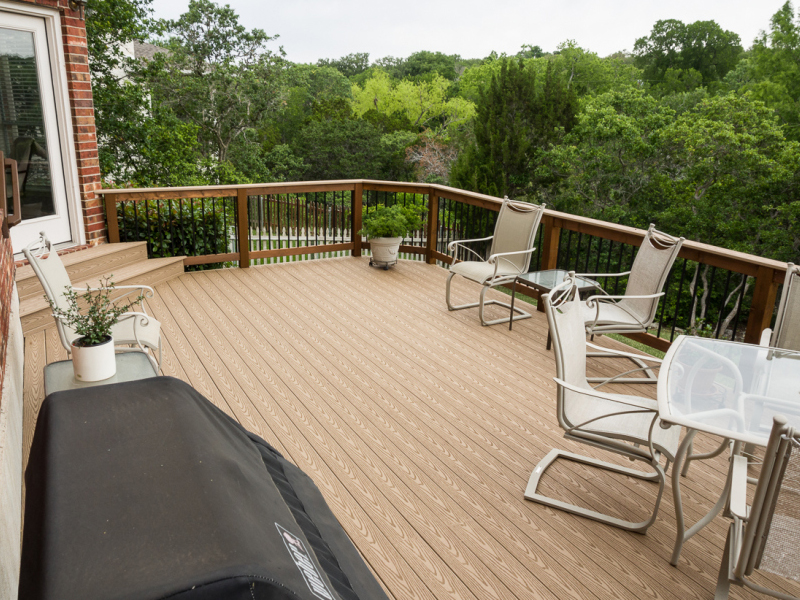18 Dog Fence Ideas: Styles & Solutions for Every Yard & Every Dog
If you own a dog, a fenced-in backyard is a must to give your…

May is deck safety month, which is the perfect time to review deck safety best practices to ensure your favorite backyard addition is safe for the whole family. Whether you recently added a deck to your backyard, or are interested in adding one, it’s never too late to tackle common deck safety issues. Review our checklist of top deck safety tips and contact us if you need any of the items repaired so your whole family can enjoy your deck for years to come.
Although older decks will more commonly have this issue, with the right conditions, even newer decks can face wood rot. Rotting and weakened wood create structural issues that can quickly become hazards. Pay special attention to areas of your deck that frequently come into contact with moisture as well as the areas that are in contact with fasteners. Besides visually inspecting the wood, you can take a screwdriver or other sharp object and poke the wood to check for softness. A healthy deck will have wood that’s difficult to penetrate, so if your deck feels soft, it’s almost a guaranteed sign of wood rot and weakness.
Almost all decks are raised high enough off the ground that they require steps and those steps need to checked regularly. In the same manner you check for wood rot above, check your steps for soft, splintered, or rotting wood. Also double-check for slip or tripping hazards on your steps and for loose or unusable railings. We recommend you further your examination and check the railings around your entire deck – not just the steps. If you live in an area of high moisture, consider adding a non-slip coating to your steps to prevent avoidable accidents.
Flashing is used to prevent water and moisture from hitting areas of the deck that are susceptible to rot and decay – usually in areas around the house. It’s essential that flashing is checked regularly, as flashing in disrepair can not only lead to damage to your deck, but also to your home.
This is also a great time to evaluate if any areas of your deck could benefit from the addition of flashing. If your deck was installed by a team of professionals, you likely won’t have to add any flashing, but it is worth noting.
As the name suggests, a fastener is used to fasten the deck together – nails, screws, and anchors are frequently used. You want to ensure the fasteners are in good shape to prevent boards from moving and leading to injury. Besides needing to check fasteners to ensure stability, it’s also important to find any that are rusting. Rusted fasteners can quickly lead to rot and decay in the surrounding wood, leading to the soft and splintering wood we mentioned in step one.
While the month of May is the perfect time to reflect on deck safety, deck maintenance should be prioritized year-round – especially regularly staining the wood. But don’t worry, you’re not in this alone, if you’re ready for a new deck, give our experts at Austex a call today!